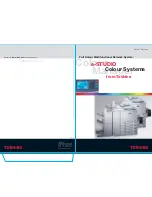
After CC Cell Flow Is Enabled
If the VC or VP is set up as the source point, the ATM interface sends one CC cell per
second. CC cell generation stops if one of the following conditions occur:
■
The ATM interface goes down.
■
You disable OAM CC on the circuit by using the
atm pvc
command.
■
The peer deactivates the OAM CC cell flow.
■
You disable OAM cell reception and transmission on the ATM interface by using
the
atm oam flush
command.
If the VP is set up as a CC sink point and no CC cell is received for 4 seconds, the VP
goes to AIS state and sends one RDI cell per second.
To view the current state of the activation or deactivation process, including statistics,
use the
show atm oam
command for VPs and the
show atm vc atm interface
command for VCs.
Loopback
You can use loopback cells to verify connectivity between VP/VC endpoints, as well
as segment endpoints within the VP/VC. You can use these tests to perform fault
isolation over the VP/VC.
The ATM interface supports VC integrity, which generates F5 end-to-end loopback
cells. It also supports ATM ping, which generates F4 and F5 segment and end-to-end
loopback cells to test the reachability of an endpoint or a segment endpoint.
VC Integrity
VC integrity is used to monitor the operational status of an individual VC. VC integrity
provides continuous ATM VC-layer connectivity verification by periodically sending
F5 end-to-end loopback cells on individual PVCs to verify end-to-end connectivity.
You can set the frequency with which loopback cells are transmitted for an individual
VC.
If VC integrity is enabled, the peer ATM host must respond to the router’s loopback
cells, or the circuit will be disabled. The ATM interface does not reenable the circuit
until it receives loopback responses or until local VC integrity is disabled.
You can set the following VC integrity parameters for an individual VC with the
oam retry
command. For more information, see “oam retry” on page 54.
■
The retry frequency with which loopback cells are transmitted when the router
verifies the down status of the circuit; that is, when the peer ATM host does not
respond to a loopback cell
■
The retry frequency with which loopback cells are transmitted when the router
verifies the up status of the circuit; that is, when the ATM host resumes
responding to a loopback cell
18
■
Operations, Administration, and Management of ATM Interfaces
JUNOSe 11.1.x Link Layer Configuration Guide
Summary of Contents for JUNOSE 11.1.X - LINK LAYER CONFIGURATION 4-7-2010
Page 6: ...vi...
Page 8: ...viii JUNOSe 11 1 x Link Layer Configuration Guide...
Page 26: ...xxvi List of Figures JUNOSe 11 1 x Link Layer Configuration Guide...
Page 34: ...2 Chapters JUNOSe 11 1 x Link Layer Configuration Guide...
Page 230: ...198 Monitoring VLAN and S VLAN Subinterfaces JUNOSe 11 1 x Link Layer Configuration Guide...
Page 258: ...226 Monitoring 802 3ad Link Aggregation JUNOSe 11 1 x Link Layer Configuration Guide...
Page 334: ...302 Troubleshooting JUNOSe 11 1 x Link Layer Configuration Guide...
Page 394: ...362 Monitoring Multiclass MLPPP JUNOSe 11 1 x Link Layer Configuration Guide...
Page 406: ...374 Monitoring POS JUNOSe 11 1 x Link Layer Configuration Guide...
Page 468: ...436 Troubleshooting JUNOSe 11 1 x Link Layer Configuration Guide...
Page 498: ...466 Monitoring Bridged Ethernet JUNOSe 11 1 x Link Layer Configuration Guide...
Page 546: ...514 Monitoring Cisco HDLC JUNOSe 11 1 x Link Layer Configuration Guide...
Page 747: ...Part 2 Index Index on page 717 Index 715...
Page 748: ...716 Index JUNOSe 11 1 x Link Layer Configuration Guide...
Page 774: ...742 Index JUNOSe 11 1 x Link Layer Configuration Guide...
















































